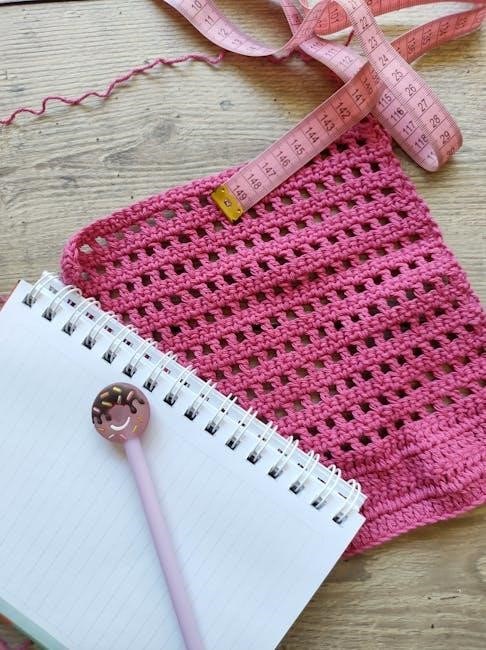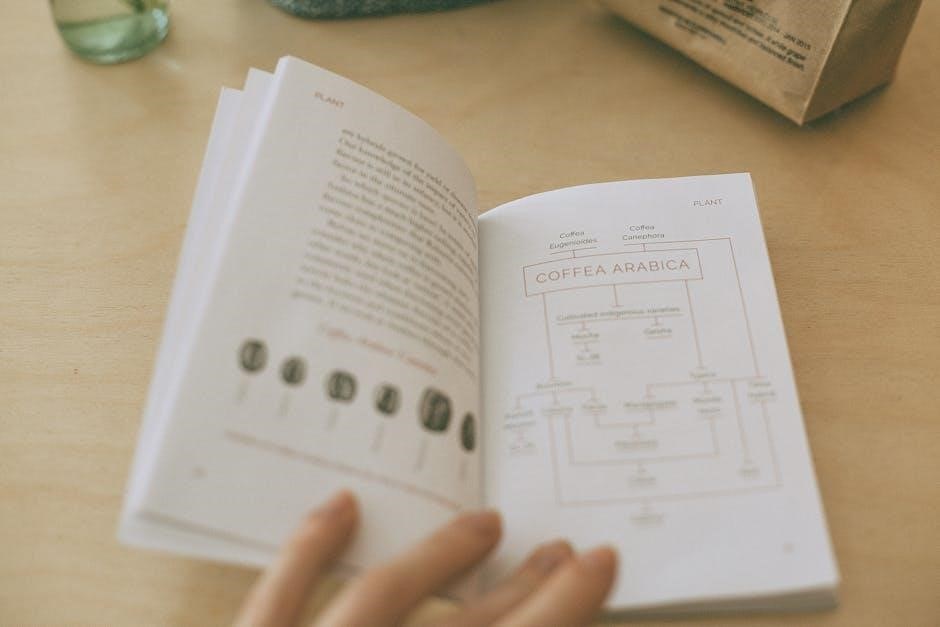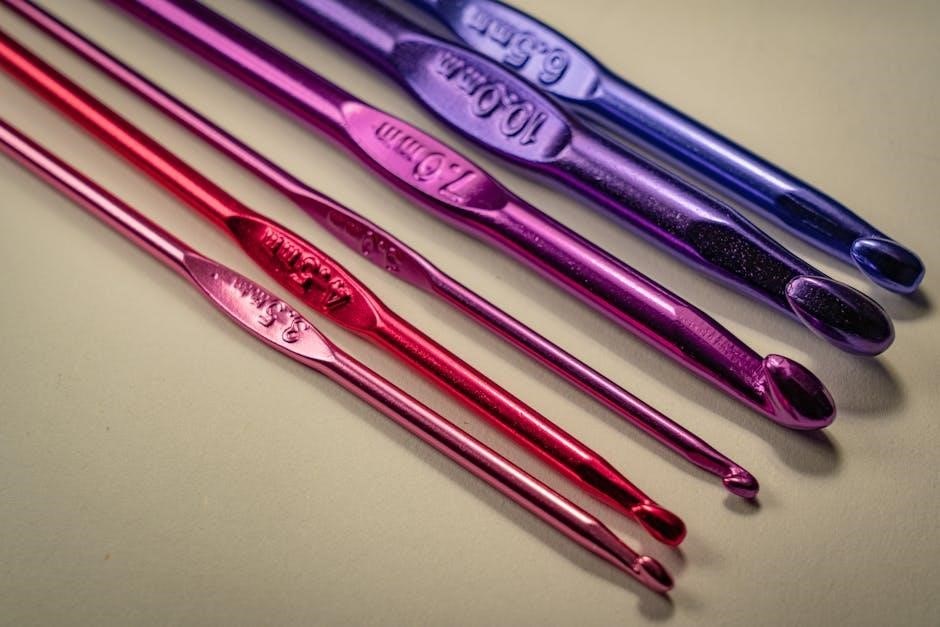Creating the perfectly sized crochet beanie can be a delightful and rewarding experience.
This comprehensive guide will walk you through everything you need to know to crochet beanies that fit comfortably and look fantastic, every time.
Crocheting beanies is a popular craft, enjoyed by beginners and experienced crocheters alike. A key aspect of creating a successful crochet beanie is achieving the correct size.
A well-sized beanie will not only fit comfortably but also enhance the overall look and feel of the finished product.
This guide provides essential information on beanie sizing, ensuring that your creations are perfectly tailored for the intended wearer.
We’ll cover age-based sizing, measuring techniques, and factors that influence the final size of your beanie.
Whether you’re making a beanie for a newborn, a toddler, or an adult, understanding the nuances of sizing is crucial.
We’ll also explore how yarn type, stitch pattern, and personal preferences can impact the overall fit.
By following this guide, you’ll gain the knowledge and skills to customize beanie sizes, ensuring a perfect fit every time.
So, grab your crochet hook and yarn, and let’s dive into the world of crochet beanie sizing!
Importance of Accurate Sizing
Accurate sizing is paramount when crocheting beanies, as it directly impacts comfort, fit, and overall satisfaction. A beanie that’s too small will be uncomfortably tight, while one that’s too large may slip off or look awkward.
Ensuring the right size is especially crucial for children and infants, where comfort and safety are top priorities.
An ill-fitting beanie can cause discomfort, irritation, or even pose a hazard. Accurate sizing also affects the beanie’s aesthetic appeal.
A well-fitted beanie will have a neat, professional look, enhancing the overall design.
By contrast, a poorly sized beanie can appear sloppy or unfinished, detracting from the crocheter’s hard work.
Furthermore, accurate sizing helps to conserve yarn and time. By getting the size right the first time, you avoid the need for costly and time-consuming adjustments.
Using reliable size charts and precise measuring techniques will help you achieve the perfect fit.
Understanding the importance of accurate sizing will not only improve the quality of your crochet projects but also increase the enjoyment and appreciation of the recipient.
Age-Based Size Chart for Crochet Beanies
An age-based size chart is a valuable tool for crocheters, providing a starting point for creating beanies that fit various age groups.
This chart typically outlines average head circumferences for different ages, from newborns to adults.
Using this chart, you can estimate the appropriate beanie size based on the intended recipient’s age.
The age-based size chart is especially helpful when crocheting beanies as gifts or for charitable purposes, where you may not have access to exact head measurements.
However, it’s essential to remember that these are just averages, and individual head sizes can vary significantly within each age group.
For the best fit, it’s always recommended to measure the recipient’s head circumference directly.
Despite its limitations, the age-based size chart remains a useful reference for crocheters, providing a general guideline for beanie sizes.
When using the chart, consider factors such as yarn type, stitch pattern, and desired fit.
Adjustments may be necessary to achieve the perfect fit for each individual.
The age-based size chart serves as a foundation for creating well-fitting beanies, ensuring comfort and satisfaction for the wearer.
By combining the chart with accurate measurements and careful attention to detail, crocheters can produce beanies that are both stylish and functional.
Newborn to 3 Months: 13-14 Inches
For newborns to 3-month-old babies, the average head circumference typically falls within the range of 13 to 14 inches.
When crocheting a beanie for this age group, it’s crucial to aim for a comfortable and snug fit without being too tight.
A beanie that’s too tight can be uncomfortable and potentially restrict blood flow, while one that’s too loose may easily slip off.
To achieve the ideal fit, start by crocheting a flat circle or a small swatch to determine your gauge.
Adjust your hook size or yarn thickness as needed to match the recommended gauge for the pattern.
As you crochet the beanie, periodically measure the circumference to ensure it aligns with the 13-14 inch target.
Keep in mind that babies grow quickly, so it’s generally better to err on the slightly larger side.
A beanie that’s a bit too big can always be folded up or adjusted, while one that’s too small will quickly become unusable.
When choosing yarn, opt for soft, hypoallergenic materials that are gentle on a baby’s delicate skin.
Avoid using yarns with fuzzy fibers or embellishments that could pose a choking hazard.

With careful attention to detail and a focus on comfort and safety, you can crochet a beautiful and functional beanie for a newborn to 3-month-old baby.
Baby (3-6 Months): 14-15 Inches
For babies aged 3 to 6 months, the average head circumference generally ranges from 14 to 15 inches.
When crocheting a beanie for this age group, precision in sizing is key to ensure both comfort and functionality.
A well-fitted beanie will stay securely on the baby’s head, providing warmth and protection without being overly restrictive.
To start, it’s recommended to measure the baby’s head circumference if possible.
If not, you can rely on the average size range, but keep in mind that individual babies may vary.
When selecting a crochet pattern, pay close attention to the recommended gauge and yarn weight.
Using the specified yarn and hook size will help you achieve the desired dimensions.
As you crochet, periodically measure the circumference of the beanie to ensure it’s on track.
If your gauge differs from the pattern, you may need to adjust the number of stitches or rows accordingly.
For a comfortable fit, consider adding a bit of stretch to the beanie by using a ribbed stitch pattern or incorporating elastic yarn.
Also, choose soft, baby-friendly yarn that won’t irritate the baby’s skin.
Avoid embellishments that could be pulled off and pose a choking hazard.
With careful planning and attention to detail, you can create a perfectly sized crochet beanie for a baby aged 3 to 6 months.
Infant (6-12 Months): 15-16 Inches
Infants aged 6 to 12 months typically have a head circumference ranging from 15 to 16 inches, making this a crucial measurement for crafting a well-fitting crochet beanie;
Accurate sizing ensures the beanie stays comfortably on the infant’s head, providing warmth and security without being too tight or loose.
Start by measuring the infant’s head circumference if possible; however, if this isn’t feasible, use the average size range as a guide, keeping in mind that individual head sizes can vary.
Choosing the right crochet pattern is essential, and it should specify the appropriate gauge and yarn weight.
Using the recommended yarn and hook size will help you achieve the intended dimensions.
As you crochet, regularly check the beanie’s circumference to ensure it aligns with the target size.
If your gauge deviates from the pattern, adjust the number of stitches or rows accordingly.
For a snug and comfortable fit, consider incorporating a stretchy stitch pattern, such as ribbing, or using a yarn with elastic properties.
Select soft, hypoallergenic yarn that is gentle on the infant’s sensitive skin.
Avoid adding any small embellishments that could detach and pose a choking risk.
With careful attention to detail and precise measurements, you can crochet a perfectly sized beanie for an infant aged 6 to 12 months.
Toddler to Adult Sizes
As we move beyond infancy, the head sizes of toddlers, children, teens, and adults vary significantly, requiring a broader range of crochet beanie sizes.
For toddlers (1-3 years), the average head circumference ranges from 16 to 19 inches, while children (3-10 years) typically measure between 19 and 21 inches.
Teens and adults have even wider variations, with average head circumferences ranging from 21 to 24 inches or more.
Accurate measurement is crucial for ensuring a comfortable and well-fitting beanie.
Whenever possible, measure the recipient’s head circumference to determine the appropriate size.
If measuring isn’t possible, consult a size chart or use average measurements for the age group.
Consider the desired fit when selecting a size; some prefer a snug fit, while others prefer a looser, slouchier style.
Choose a crochet pattern that offers multiple size options or provides instructions for adjusting the size.
Pay close attention to the pattern’s gauge and yarn recommendations, as these factors significantly impact the finished size.
When crocheting, regularly check the beanie’s circumference against the target measurement.
Adjust the number of stitches or rows as needed to achieve the desired size.
For larger sizes, consider using a larger crochet hook or a thicker yarn to expedite the process.
Be mindful of the yarn’s stretch and elasticity, as this can affect the final fit.
With careful planning and precise execution, you can crochet beanies that perfectly fit toddlers to adults.

Measuring Head Circumference for Accurate Fit
Achieving a perfect fit for your crochet beanie begins with accurately measuring the head circumference.
This measurement serves as the foundation for selecting the appropriate size and ensuring comfort.
To measure head circumference, use a flexible measuring tape, positioning it around the head just above the ears and across the forehead.
Ensure the tape is snug but not too tight, as this can distort the measurement.
If a flexible measuring tape is unavailable, use a piece of yarn or string, marking the circumference and then measuring the string with a ruler.
Record the measurement in inches or centimeters, depending on the crochet pattern’s instructions.
Compare the measurement to a size chart or use it to calculate the beanie’s initial diameter.
Consider the desired fit when interpreting the measurement; for a snug fit, use the exact measurement, while for a looser fit, add a small allowance.
Remember that head sizes can vary, so it’s always best to measure the recipient’s head whenever possible.
If measuring isn’t feasible, use average measurements for the age group, but be prepared to make adjustments.
Keep in mind that yarn type and stitch pattern can also affect the final size, so it’s essential to consider these factors.
By accurately measuring head circumference, you can increase the likelihood of crocheting a beanie that fits perfectly.
This step is crucial for creating comfortable and stylish beanies that will be cherished for years to come.
Using a Flexible Measuring Tape
Employing a flexible measuring tape is the most accurate method for determining head circumference, crucial for a well-fitting crochet beanie.
Begin by positioning the tape around the head, ensuring it rests just above the ears and across the forehead, where the hat’s brim will sit.
Maintain a snug but comfortable fit; the tape should not be too tight, which could compress the head and yield an undersized measurement.
Avoid letting the tape sag or twist, ensuring it remains level around the entire circumference.
Read the measurement at the point where the tape overlaps, noting the value in inches or centimeters, depending on the pattern’s specifications.
For increased accuracy, repeat the measurement a few times, averaging the results to minimize potential errors.
When measuring a child or infant, exercise extra caution, ensuring their comfort and cooperation throughout the process.
If the recipient has thick hair, consider gently compressing it to obtain a more accurate measurement of the head’s true size.
Remember that the measuring tape itself can introduce slight variations, so use a quality tape that is not stretched or distorted.
Always double-check the measurement before proceeding with the crochet project, as even small errors can significantly impact the final fit.
By mastering the art of using a flexible measuring tape, you’ll be well-equipped to create crochet beanies that fit comfortably and stylishly.
Accurate measurements are the cornerstone of successful crochet projects, ensuring a satisfying result every time.

Alternative Measurement Method with Yarn
When a flexible measuring tape isn’t readily available, an alternative method using yarn can provide a reasonably accurate head circumference measurement for your crochet beanie project.
Begin by taking a length of yarn, preferably a non-stretchy type like cotton or acrylic, and wrap it around the head, positioning it just above the ears and across the forehead, mimicking where the beanie’s brim will sit.
Ensure the yarn is snug but not overly tight, maintaining a comfortable fit that doesn’t compress the head.
Mark the point on the yarn where it overlaps, using a pen or a small piece of tape to indicate the circumference.
Carefully remove the yarn from the head, being mindful not to stretch or distort its length.
Lay the yarn flat on a ruler or measuring tape, aligning one end at the zero mark and extending it to the marked point.
Read the measurement at the marked point, noting the value in inches or centimeters, depending on the pattern’s requirements.
For enhanced accuracy, repeat the process a few times, taking an average of the measurements to minimize potential discrepancies.
This method is particularly useful when measuring children or infants, as it can be less intrusive than using a rigid measuring tape.
However, exercise caution to avoid stretching the yarn during the measurement process, as this can lead to inaccurate results.
While not as precise as using a flexible measuring tape, this yarn method offers a convenient and accessible alternative for obtaining head circumference measurements.
Remember to always double-check your measurements before commencing your crochet beanie project.
Factors Affecting Beanie Size
Achieving the perfect fit for a crochet beanie involves more than just following a size chart.
Several key factors can significantly impact the final dimensions of your project, requiring careful consideration to ensure a comfortable and accurate result.
The yarn’s properties play a crucial role, with variations in thickness and fiber content affecting the overall size.
Thicker yarns naturally produce larger beanies, while thinner yarns result in smaller ones.
Similarly, the chosen stitch pattern influences the beanie’s size and stretchiness.
Dense stitch patterns create tighter fabrics with less give, while looser patterns offer greater flexibility.
Your individual crochet tension is another critical element, as tighter tension leads to smaller, denser beanies, while looser tension produces larger, more open ones.
Maintaining consistent tension throughout the project is essential for achieving uniform sizing.
Additionally, the hook size used can alter the beanie’s dimensions, with larger hooks creating looser fabrics and smaller hooks resulting in tighter ones.
The beanie’s design can also impact its size, with slouchy beanies requiring extra length and fitted beanies demanding precise measurements.
Furthermore, the presence of features like brims or textured stitches can affect the overall fit and appearance.
Accounting for these factors and making necessary adjustments is crucial for creating crochet beanies that meet your desired size and style requirements.
Always crochet a gauge swatch to assess how your chosen yarn, stitch pattern, and tension interact.
Customizing Beanie Size

Yarn Type and Thickness
The selection of yarn is paramount when crocheting a beanie, profoundly influencing its size, texture, and overall appearance.
Different yarn types possess varying thicknesses and fiber compositions, each with unique characteristics that impact the final product.
Bulky or super bulky yarns create thicker, warmer beanies, ideal for cold weather, while sport or DK weight yarns produce lighter, more delicate beanies suitable for milder climates.
The yarn’s fiber content also plays a crucial role, with wool offering warmth and elasticity, cotton providing breathability and softness, and acrylic delivering affordability and durability.
Consider the yarn’s stretchiness, as elastic yarns like wool or blends will create beanies with a snugger fit.
The yarn’s texture can also affect the perceived size, with nubby or textured yarns adding bulk and dimension.
Always check the yarn label for recommended hook sizes, as these can influence the gauge and overall size of the beanie.
It is also important to account for any differences in the yarn if it is a different dye lot.
Substituting yarns can significantly alter the final dimensions, so it’s crucial to crochet a gauge swatch to ensure the desired size is achieved.
Taking into account the yarn’s properties and making informed choices will contribute to the creation of a well-fitting and visually appealing crochet beanie.
Leave a Reply
You must be logged in to post a comment.